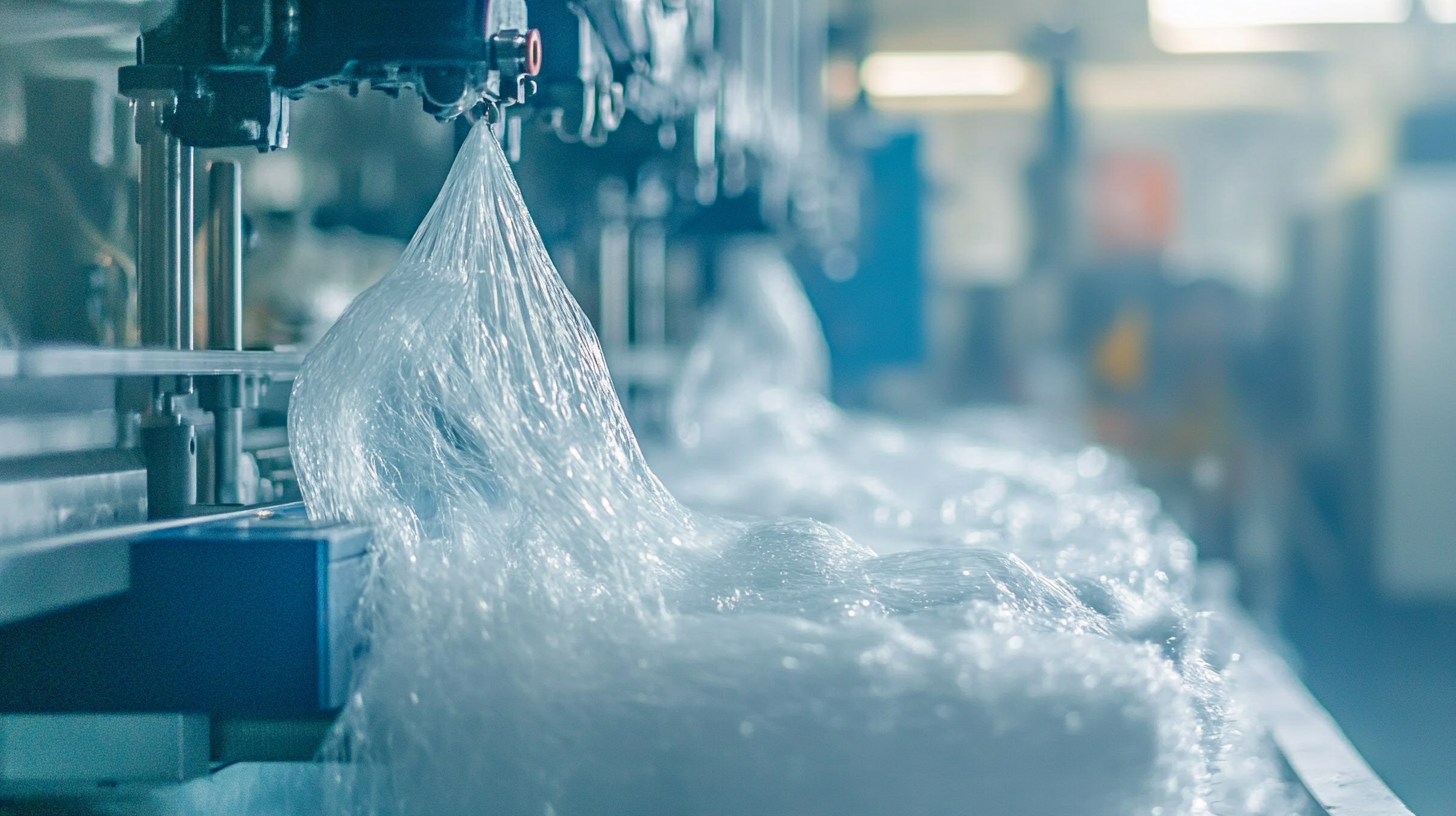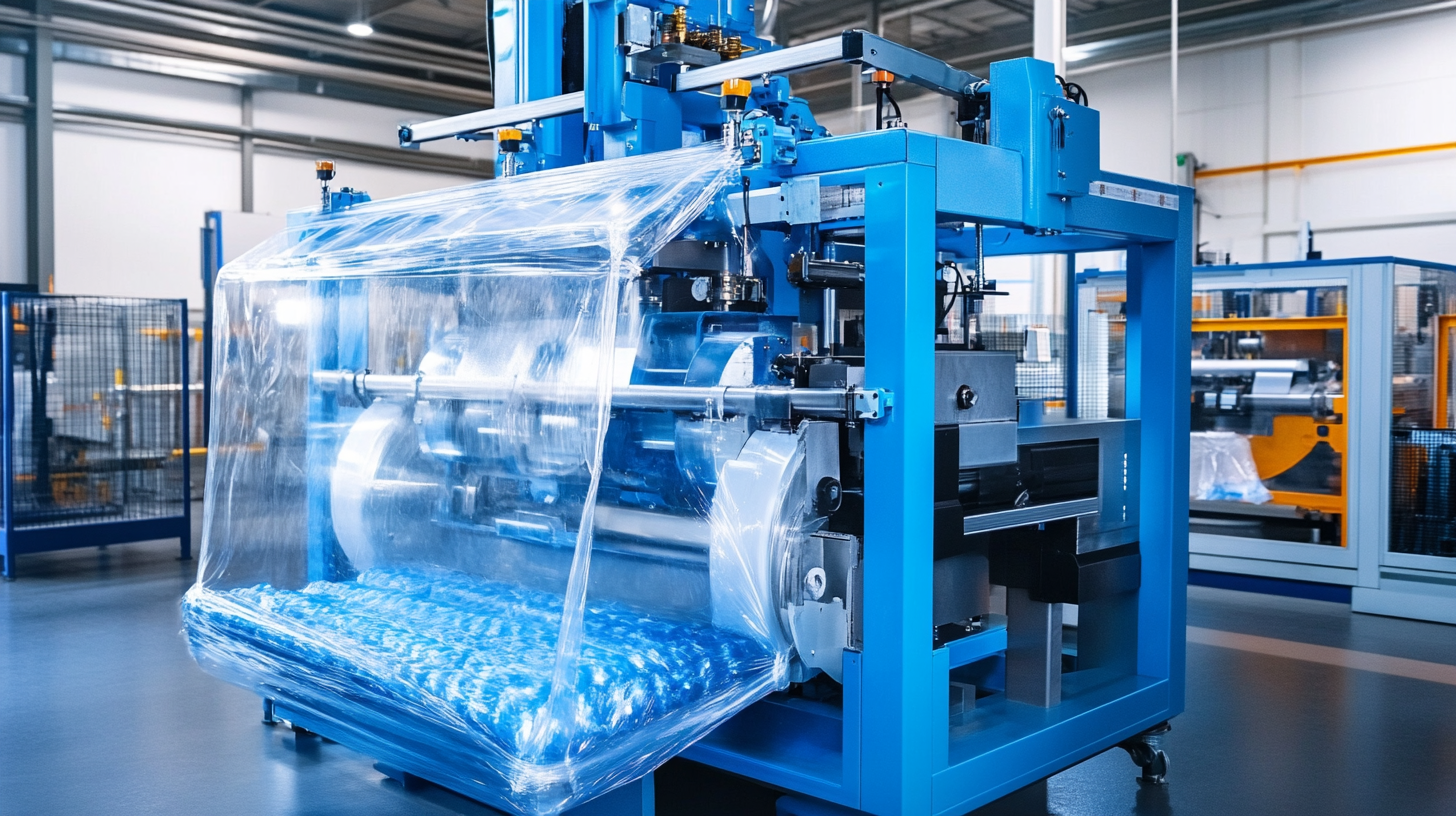
Exploring Innovative Variants of the Best Plastic Bag Making Machine for Your Business Needs
In the ever-evolving landscape of packaging solutions, the demand for high-quality plastic bag making machines is surging, driven by the global packaging market's projected growth to reach USD 1 trillion by 2027, according to a recent market research report. Businesses are increasingly seeking innovative variants of the plastic bag making machine to cater to unique production requirements, enhance efficiency, and reduce operational costs. With the rise of sustainability concerns, it has become essential for manufacturers to source machines that not only deliver superior performance but also align with environmentally friendly practices. Therefore, identifying reliable suppliers that offer state-of-the-art machinery is crucial for any business looking to thrive in this competitive industry. Exploring the best options available can empower entrepreneurs to make informed decisions, leading to improved profitability and sustainable growth.

Innovative Features to Look for in Modern Plastic Bag Making Machines
When exploring innovative features in modern plastic bag making machines, it is essential to prioritize efficiency and adaptability. Advanced machines now offer smart technology integrations, such as IoT capabilities, allowing remote monitoring and control. This not only enhances operational efficiency but also enables real-time maintenance alerts, minimizing downtime and maximizing productivity. Additionally, automatic adjustments for bag sizes and designs can significantly optimize the production process, catering to diverse client needs without extensive manual intervention.
Another crucial feature to consider is sustainability. Eco-friendly machines that incorporate biodegradable materials and energy-efficient operation are gaining traction in the industry. Look for machines equipped with functions that allow for the use of recycled plastics, reducing the environmental footprint of your production. Furthermore, programmable settings that allow for easy customization enhance versatility, making it easier to stay ahead in a competitive market where consumer preferences are continuously evolving. By focusing on these innovative characteristics, businesses can significantly enhance their production capabilities while contributing to a more sustainable future.
Innovative Features of Modern Plastic Bag Making Machines
Market Trends: The Rising Demand for Eco-Friendly Plastic Bags in 2023
As we dive into 2023, the market for eco-friendly plastic bags is witnessing robust growth, driven by increasing consumer awareness and environmental concerns. The demand for sustainable packaging solutions is reshaping the landscape, with businesses seeking innovative plastic bag manufacturing technologies to meet these challenges. Companies are investing in advanced machinery that not only enhances production efficiency but also aligns with eco-friendly practices. This shift towards sustainability is not just a trend; it's a necessity as businesses strive to comply with stricter regulations and consumer expectations.
According to market analysis, the paper bag sector alone was valued at USD 6.06 billion in 2024 and is expected to grow to USD 7.81 billion by 2029, reflecting a compound annual growth rate (CAGR) of 5.2%. This growth indicates a significant preference for eco-conscious products as consumers prioritize sustainability over traditional plastic options. Manufacturers are now challenged to innovate, creating high-quality paper and plastic hybrid solutions that balance convenience with environmental responsibility. Embracing these market trends is crucial for businesses looking to remain competitive while contributing positively to the planet's well-being.
Exploring Innovative Variants of the Best Plastic Bag Making Machine for Your Business Needs - Market Trends: The Rising Demand for Eco-Friendly Plastic Bags in 2023
| Variant | Machine Type | Production Capacity (bags/hour) | Eco-Friendly Features | Market Trend (2023) |
|---|---|---|---|---|
| Model A | Automatic | 500 | Biodegradable material compatibility | High Demand |
| Model B | Semi-Automatic | 300 | Recyclable material technology | Increasing Interest |
| Model C | Manual | 150 | Custom plant-based materials | Niche Market |
| Model D | Fully Automated | 800 | Energy-efficient operation | Growing Demand |
| Model E | Hybrid | 400 | Dual-material support | Rising Awareness |
Cost-Benefit Analysis: Investing in High-Efficiency Bag Making Equipment
Investing in high-efficiency bag-making equipment is a critical decision for any business focused on growth and sustainability. With the rising costs of raw materials and labor, a cost-benefit analysis of plastic bag-making machines reveals that high-efficiency models can offer significant long-term savings. These machines utilize advanced technology to reduce energy consumption, minimize waste, and optimize production speed, ultimately lowering unit costs. In the competitive landscape of bag manufacturing, having the right equipment can differentiate a business from its competitors and enhance profitability.

Moreover, the initial investment in innovative bag-making machinery can be offset by the improvements in operational efficiency and product quality. High-efficiency machines often come equipped with automation features that streamline the production process, leading to faster turnaround times and reduced labor costs. Additionally, these machines can produce a wider variety of bag types and sizes, allowing businesses to cater to diverse customer needs and expanding market reach. By strategically investing in the best plastic bag-making machines, businesses not only enhance their capabilities but also position themselves for sustainable growth in an evolving market.
Technological Advancements in Plastic Bag Production: Enhancing Productivity
In recent years, technological advancements in plastic bag production have significantly transformed the manufacturing landscape, enhancing productivity and efficiency for businesses. According to a report by Mordor Intelligence, the global plastic packaging market is projected to grow at a CAGR of 3.5% from 2021 to 2026. This growth is largely driven by innovations in machinery, including the introduction of automated plastic bag making machines that streamline the production process. These machines not only reduce labor costs but also increase output, allowing manufacturers to meet growing consumer demands.
One of the most noteworthy innovations is the development of hybrid machines that combine multiple functions—such as sealing, printing, and cutting—into a single unit. According to a study by Research and Markets, the adoption of such all-in-one solutions can boost production efficiency by up to 40%. By integrating advanced technologies such as IoT and AI, these machines provide real-time data analytics, enabling manufacturers to optimize their operations and minimize waste. As the industry continues to embrace these cutting-edge technologies, businesses can expect to see a significant enhancement in their productivity and overall competitiveness in the market.
Choosing the Right Materials: A Key Factor for Quality Plastic Bag Output
When it comes to producing high-quality plastic bags, the choice of materials is crucial to ensure the final product meets both durability and customer expectations. Many businesses overlook this essential factor, believing that any plastic resin will suffice. However, different applications require specific types of plastics that provide the desired strength, flexibility, and environmental compliance. For instance, low-density polyethylene (LDPE) is often favored for its flexibility and clarity, making it ideal for retail bags, while high-density polyethylene (HDPE) offers a sturdier option for carrying heavier items.
Additionally, opting for biodegradable materials can enhance your brand's sustainability efforts without compromising on quality. Innovations in material science have led to the development of bioplastics, which are not only environmentally friendly but also provide similar performance characteristics to traditional plastic. By choosing the right materials, businesses can boost their reputation and align with consumer preferences, all while ensuring that their plastic bag output maintains its integrity during manufacturing and end-use. Therefore, evaluating material options is a vital step in optimizing production processes and meeting business needs effectively.
